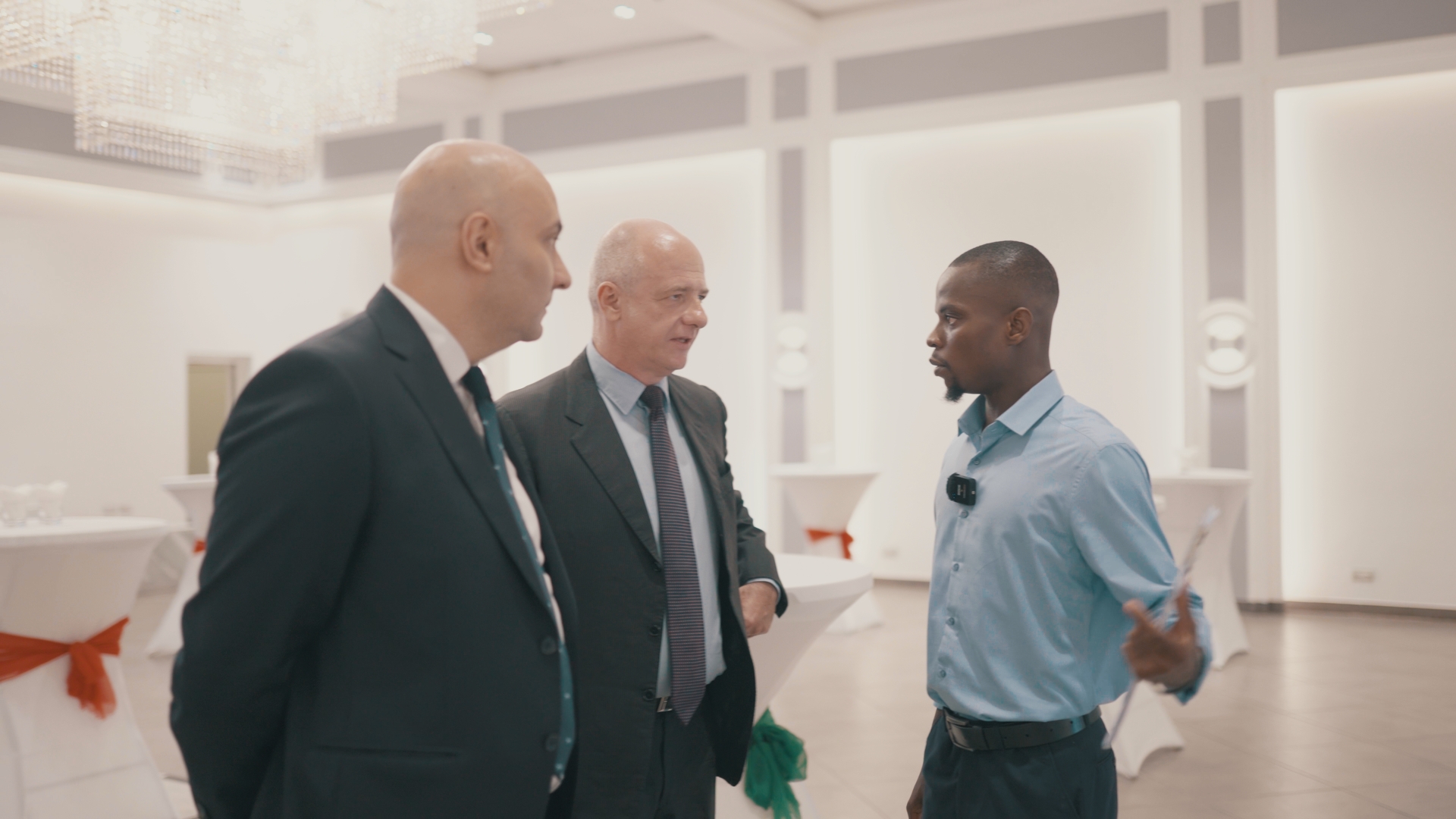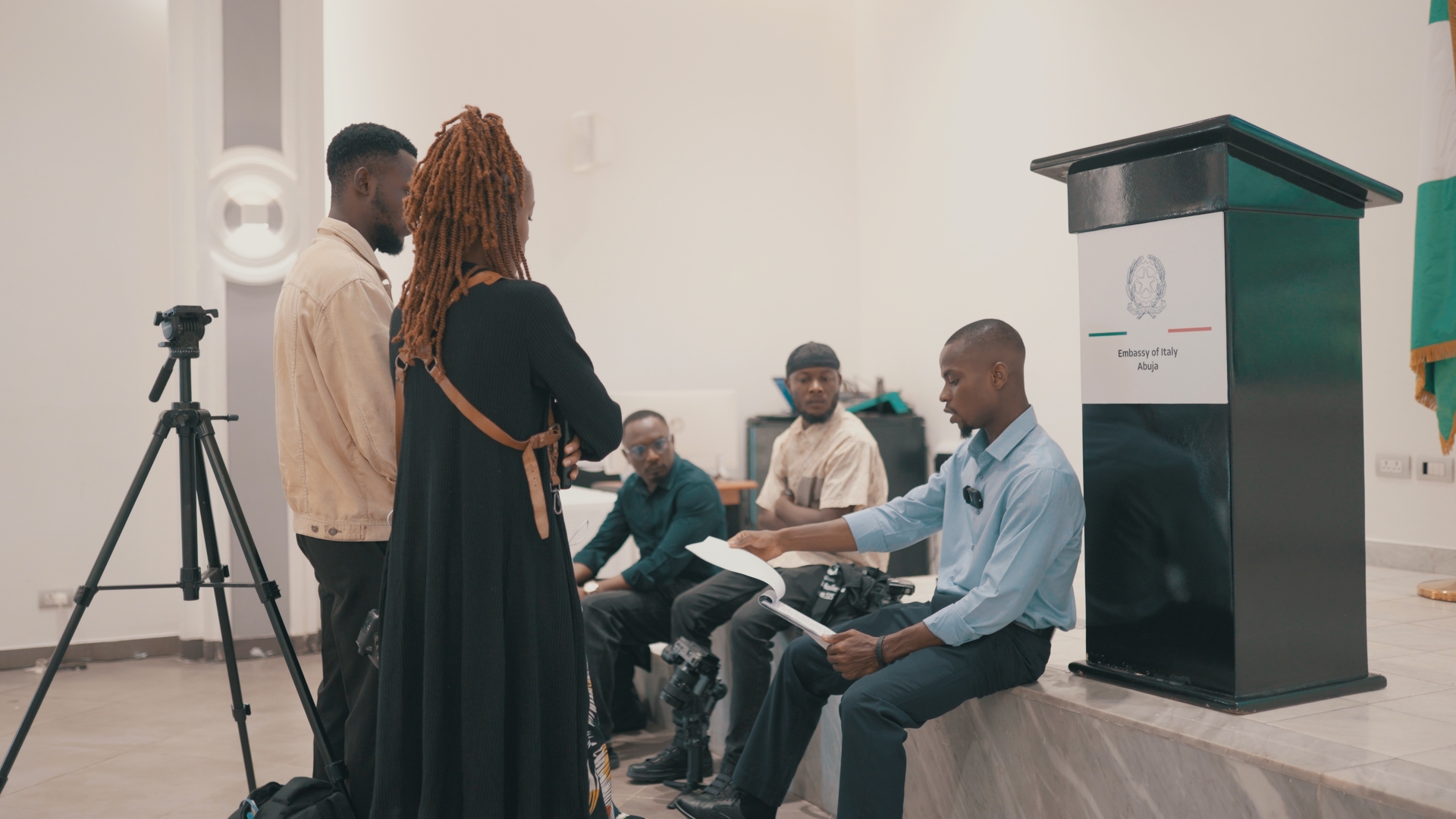Alright – so today we’ve got the honor of introducing you to Muhammad Idoniwako. We think you’ll enjoy our conversation, we’ve shared it below.
Muhammad, appreciate you joining us today. What do you think Corporate America gets wrong in your industry?
That’s the most critical question in my field, and the answer gets to the very heart of why the role of a ‘Cinematic Strategist’ even exists.
What the corporate world gets fundamentally wrong is that it treats its most important narrative as a tactical marketing output, when it is, in fact, a C-suite-level strategic asset. This creates a chasm I call the Strategic Void™. The market is split between ‘The Architects’, who design brilliant but inert strategy decks, and ‘The Builders’, who are tactical executors. The executive is left as an ‘unpaid general contractor,’ trying to bridge that gap, and the result is often a ‘hollow asset’—a beautiful but strategically bankrupt film.
This isn’t just a theory; it’s a costly pattern I’ve seen play out across the industry. To make this tangible, let me walk you through a common archetype, a synthesis of challenges I’ve seen in high-growth firms. For clarity, let’s give this archetypal company a name: ‘Fintera’.
Imagine Fintera: a Series B FinTech preparing for a critical Series C investor roadshow. They’ve budgeted $100,000 for a vision film to build conviction. This is a classic high-stakes scenario.
But the hidden risk, the one the traditional vendor model is not equipped to find, is a ‘Fractured Internal Narrative’. The C-suite is not aligned.
• The CEO wants to tell a grand ‘Social Visionary’ story.
• The Head of Product wants to tell a ‘Technological Innovator’ story.
• The Head of Sales wants to tell a ‘Pragmatic Problem-Solver’ story
In this scenario, proceeding with production would be catastrophic. The $100,000 film would be a muddled mess that confuses investors, actively harming their fundraising. This is a perfect example of a company about to pay a massive Clarity Tax™.
This is where my work as a Cinematic Strategist begins. The correct strategic intervention is not to ask, ‘What kind of film should we make?’ It’s to diagnose the foundational misalignment and advise a ‘No-Go’ on production until a single, powerful narrative is forged. By solving the strategic problem first, the investment is de-risked and the resulting film becomes a true asset that drives the business outcome—in this case, a successful funding round.
So, to answer your question, what the industry gets wrong is that it’s still selling beautiful pictures. It’s treating the symptom. We are in the business of engineering conviction by solving the strategic problem first. And in today’s market, that is the only approach that truly matters.


Awesome – so before we get into the rest of our questions, can you briefly introduce yourself to our readers.
My name is Muhammad Idoniwako, but you can call me Moh. I’m a Cinematic Strategist, an author, and the founder of Mohgix Studios.
My journey into this discipline wasn’t linear; it was forged through a diverse set of experiences. I began my career in creative fields like photography and videography, which opened doors for me to work with the ultra-wealthy and high-level decision-makers. I even spent time in the luxury hospitality sector, managing an exclusive French dining restaurant. These experiences gave me a front-row seat to the world of luxury, where I learned that the most successful brands and leaders were defined not by what they sold, but by the clarity of their vision and an unwavering commitment to excellence.
This professional journey ran parallel to a deep personal and spiritual one. Having lost both my parents and a sibling early in life, I was driven by a search for deeper meaning. This path led me to explore different philosophies and ultimately to a framework built on the core principles of clear intention (niyyah), the relentless pursuit of excellence (ihsan), and profound gratitude (shukr). This fusion of professional observation and personal philosophy became the bedrock of what I now call the “Be Luxury Mindset™”—the belief that true luxury is an internal standard of being before it is an external brand.
I realized that the greatest challenge visionary leaders face today isn’t a marketing problem; it’s a crisis of clarity. They have a brilliant “why,” but they struggle to translate it into a narrative that builds unshakeable trust. This led me to pioneer a new field: Cinematic Strategy.
At Mohgix Studios, we provide one thing: Cinematic Clarity. We partner with discerning brands, institutions, and visionary leaders to solve high-stakes, C-suite-level problems. We do this by architecting their complex vision into powerful, cinematic assets—like brand or vision films—that win trust, command attention, and drive tangible business outcomes.
The core problem we solve is what I’ve identified as the “Strategic Void™”. This is the chasm that exists between brilliant C-suite strategy and its emotionally resonant execution. Companies invest heavily in both, but the value is destroyed in the translation between the two, forcing leaders to pay a massive, hidden liability I call the “Clarity Tax™”. Our proprietary Curated Visual Process (CVP)™ was designed specifically to bridge this void and de-risk our clients’ creative investments.
What sets us apart is a fundamental belief: we are business strategists who use the tools of cinema, not the other way around. Our primary allegiance is to the business outcome, not the art of film. While the industry is chasing fleeting metrics in a failed “Attention Economy,” we operate on a core doctrine that attention without trust is a liability. Our work is not about creating viral content; it’s about engineering conviction with the stakeholders who matter most—investors, C-suite talent, and high-value clients.
What I am most proud of is pioneering this new discipline. It’s fulfilling to provide a solution that addresses a profound, often unarticulated, pain point for brilliant leaders. When we can help a founder secure their Series C funding or a diplomatic mission build the soft power of their nation, we are doing more than just creative work; we are ensuring that important ideas don’t get lost in translation. This mission extends to my philanthropic work through my family’s foundation, where we support educational and entrepreneurial initiatives like Back2Skool and SMErise, because I believe true success is measured by the positive impact we leave behind.
Ultimately, the main thing I want potential clients and followers to know is our core thesis: Cinematic Clarity is Business Strategy. Your brand’s story isn’t a “soft” marketing function; it is a hard financial asset. We are not in the business of making videos; we are in the business of architecting clarity and building the trust that drives long-term enterprise value.


We often hear about learning lessons – but just as important is unlearning lessons. Have you ever had to unlearn a lesson?
The Lesson I Had to Unlearn: The Myth of the Attention Economy
The single most important lesson I had to unlearn was the central dogma of the last two decades of marketing: the idea that attention is the most valuable currency in business.
The backstory begins early in my career as a creative. I was what I now call a “Builder”—a photographer and filmmaker obsessed with craft. My job was to create beautiful, polished, attention-grabbing content for my clients. And for a time, that felt like success. We’d create a video, it would get thousands of views, and we’d celebrate the “engagement.”
But I started noticing a profound disconnect. The views weren’t translating into tangible business results. The attention was fleeting. A slick ad campaign might generate clicks, but it wasn’t building conviction with high-value customers. I saw leaders investing significant capital into these beautiful but “hollow assets,” and I realized we were all playing a losing game, chasing a metric that didn’t matter.
That frustration forced me to unlearn the entire playbook.
I had to accept that the old lesson was dangerously incomplete. The new, more powerful truth that I discovered is that attention without trust is a liability.
Every time a brand uses clickbait, makes a promise it can’t keep, or puts out a beautiful but strategically hollow message, it might win a moment of attention, but it erodes a measure of trust. These actions accrue what I call “Reputation Debt™”—a hidden, off-balance-sheet liability that is paid for later in the form of higher customer acquisition costs and a cynical audience.
Unlearning my obsession with attention was the turning point that led me to pioneer the field of Cinematic Strategy. It shifted my entire focus from “How do we get seen?” to “How do we build belief?”. My work is no longer about creating attention-grabbing content; it’s about architecting clarity and engineering conviction with the stakeholders who can truly change the trajectory of a business.
So, the lesson was to unlearn the industry’s addiction to the vanity of attention and instead adopt a disciplined focus on building the tangible asset of trust. Because clarity is the shortest path to trust, and in today’s economy, trust is the only competitive advantage that is truly sustainable.


Any stories or insights that might help us understand how you’ve built such a strong reputation?
How We Built Our Reputation: The Curator’s Principle™
Building a reputation in a market saturated with noise comes down to a single, non-negotiable philosophy I call The Curator’s Principle™: a disciplined commitment to creating signal, not noise.
For years, the default strategy for creatives and businesses has been to get on the “content treadmill”—producing a high volume of content just to stay visible. This creates a cacophony of noise that ultimately erodes trust and dilutes the brand’s message. Our reputation has been built by doing the exact opposite. We operate as curators, not collectors of fleeting attention.
This principle breaks down into three core pillars:
1. Lead with a Non-Negotiable Conviction: Most brands start by asking, “What does the market want?” We start by asking, “What do we believe?” Our Conviction-First Doctrine™ is the foundation of our reputation. We believe that Cinematic Clarity is Business Strategy and that attention without trust is a liability. This strong, unwavering point of view acts as a powerful signal. It’s our filter for the clients we take on and the work we produce. In a world of generic content, people are drawn to a clear, confident, and sometimes contrarian, conviction.
2. Deliver Measurable Business Outcomes, Not Just Aesthetics: Our reputation is not built on how beautiful our films look, but on what they achieve. We are fanatical about solving C-suite level problems. Every engagement is framed around a tangible outcome, whether it’s de-risking a multi-million-dollar investment, accelerating a fundraising round, or attracting world-class talent. By holding ourselves accountable for our clients’ ROI, we’ve built a reputation as a strategic partner, not just a creative vendor. This is what earns a seat at the leadership table.
3. Be Radically Transparent: The ultimate reputation-builder is trust, and the shortest path to trust is transparency. We are completely open about our proprietary methodologies, like the Curated Visual Process (CVP)™. We’ve even advised a client not to proceed with a $100,000 film because our initial diagnosis revealed a foundational strategy problem that would have guaranteed the film’s failure. Taking an action that is against our short-term financial interest to protect the client’s long-term success is the most powerful signal of integrity we can send.
The result of this curated approach is that your reputation becomes your most powerful marketing engine. For example, our strategic work for the Embassy of Italy led directly to a referral from the Embassy of Spain, which in turn led to an engagement with the Embassy of Brazil. There was no sales pitch; the reputation did the work.
So for any creative or business owner reading this, my advice is to get off the treadmill. Stop collecting followers and start curating a message. Build your reputation on the foundation of a powerful conviction and an unwavering commitment to delivering real value. That is the signal that will always cut through the noise.
Contact Info:
- Website: https://www.mohgix.com
- Instagram: https://www.instagram.com/mohgix
- Facebook: https://www.facebook.com/mohgixx
- Twitter: https://www.x.com/mohgix
- Youtube: https://www.youtube.com/@mohgix
- Other: https://mohgix.substack.com


Image Credits
Mohgix Studios


